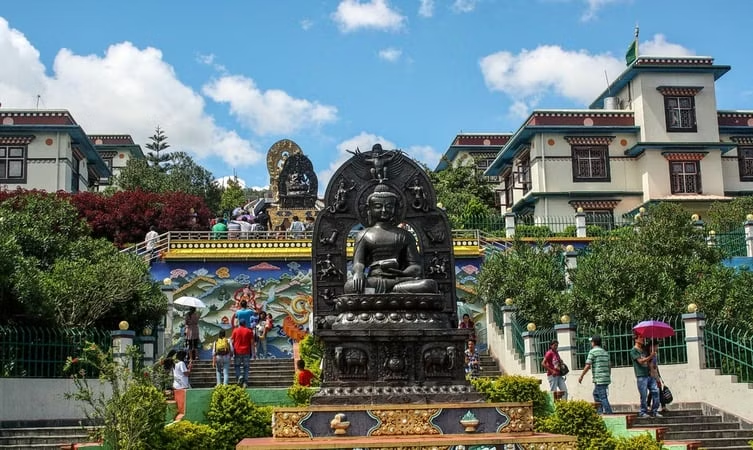Nestled in the tranquil hills of Nepal, the White Monastery, also known as the Kopan Monastery, is a hidden gem that offers both spiritual solace and a unique cultural experience for travelers. Located about 7 kilometers north of Kathmandu’s bustling city center, this Tibetan Buddhist monastery has become a prominent destination for those seeking peace, meditation, and insight into Buddhist practices.
Established in 1971 by Lama Thubten Yeshe and Lama Zopa Rinpoche, the White Monastery is renowned for its traditional Tibetan architecture and serene environment. The monastery was founded with the vision of preserving and spreading the teachings of Tibetan Buddhism, and it has since evolved into an important center for Buddhist study and practice.
The monastery’s distinctive white walls, golden roofs, and vibrant frescoes make it a standout attraction in the Kathmandu Valley. It is not only a spiritual retreat but also an architectural marvel that reflects the rich cultural heritage of Tibetan Buddhism.
Tourism and Visitor Experience
The White Monastery attracts a diverse group of visitors, from those on spiritual quests to tourists looking to explore Nepal’s cultural tapestry. Here’s what you can expect during a visit:
Scenic Beauty and Architecture: The monastery’s setting on a hill offers panoramic views of the Kathmandu Valley. Its traditional Tibetan architecture, including intricate carvings and colorful murals, provides a visual feast for visitors. The peaceful gardens and meditation spaces contribute to a calming atmosphere.
Meditation Retreats: For those interested in meditation and mindfulness, the monastery offers various retreats and workshops throughout the year. These sessions are led by experienced monks and provide a deep dive into Buddhist practices.
Cultural Tours: Visitors can join guided tours to learn about the monastery’s history, architecture, and Buddhist traditions. The tours often include visits to the monastery’s library, which houses a collection of ancient texts and manuscripts.
Community and Festivals: The monastery is an active community hub, hosting festivals and cultural events that offer insights into Tibetan Buddhist rituals and celebrations. Major festivals include the Tibetan New Year (Losar) and various Buddha Jayanti celebrations.
Practical Information for Travelers
Best Time to Visit: The ideal time to visit the White Monastery is during the cooler months from October to March. During these months, the weather is pleasant, and visibility is clear, enhancing the overall experience.
Entrance Fees: There is generally a nominal entry fee, which helps support the monastery’s upkeep and community activities. Donations are also welcomed.
How to Get There: The monastery is accessible by taxi or local buses from Kathmandu. It is advisable to check local transport options or consider guided tours that include transportation.
Respectful Behavior: As the monastery is a place of worship and meditation, visitors are expected to dress modestly and maintain a respectful demeanor. Photography is usually restricted in certain areas, so it is best to inquire before taking photos.
The White Monastery offers a unique blend of spiritual tranquility and cultural richness. Whether you are a seeker of peace, a cultural enthusiast, or simply a traveler eager to explore Nepal’s diverse heritage, a visit to this serene sanctuary promises a memorable and enriching experience.






